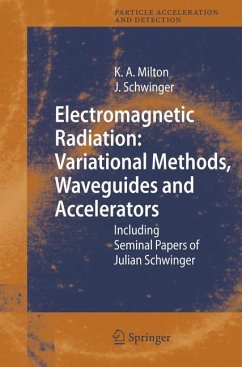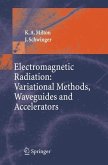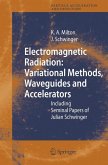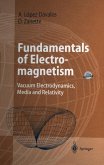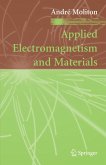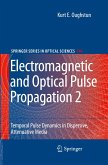Julian Schwinger was already the world's leading nuclear theorist when he joined the Radiation Laboratory at MIT in 1943, at the ripe age of 25. Just 2 years earlier he had joined the faculty at Purdue, after a postdoc with OppenheimerinBerkeley,andgraduatestudyatColumbia. Anearlysemester at Wisconsin had con?rmed his penchant to work at night, so as not to have to interact with Breit and Wigner there. He was to perfect his iconoclastic 1 habits in his more than 2 years at the Rad Lab. Despite its deliberately misleading name, the Rad Lab was not involved in nuclear physics, which was imagined then by the educated public as a esoteric science without possible military application. Rather, the subject at hand was the perfection of radar, the beaming and re?ection of microwaves which had already saved Britain from the German onslaught. Here was a technology which won the war, rather than one that prematurely ended it, at a still incalculable cost. It was partly for that reason thatSchwinger joined this e?ort, rather than what might have appeared to be the more natural project for his awesome talents, the development of nuclear weapons at Los Alamos. He had got a bit of a taste of that at the "Metallurgical Laboratory" in Chicago, and did not much like it. Perhaps more important for his decision to go to and stay at MIT during the war was its less regimented and isolated environment.
From the reviews: "The series 'Particle Acceleration and Detection' is devoted to monograph texts dealing with all aspects of particle acceleration and detection research and advanced teaching. ... concise accounts of newly emerging important topics that are embedded in a broader framework in order to provide quick but readable access of very new material to a larger audience. The books forming this collection will be of importance for graduate students and active researchers alike." (Current Engineering Practice, 2007) "Nobel laureate Julian Schwinger (1918-1994) has made seminal contributions not only to quantum field theory, but also to applied electromagnetism. This graduate-level textbook has grown out of his lectures and manuscripts, updated with material by Milton since 1994. It includes a great number of straightforward and challenging exercises and problems, and is targeted to students in physics, electrical engineering and applied mathematics ... . the remarkable mix of fundamental and applied treatments lets me recommend the book to the researcher, too." (Peter Enders, Optics and Photonics News, October, 2007)

